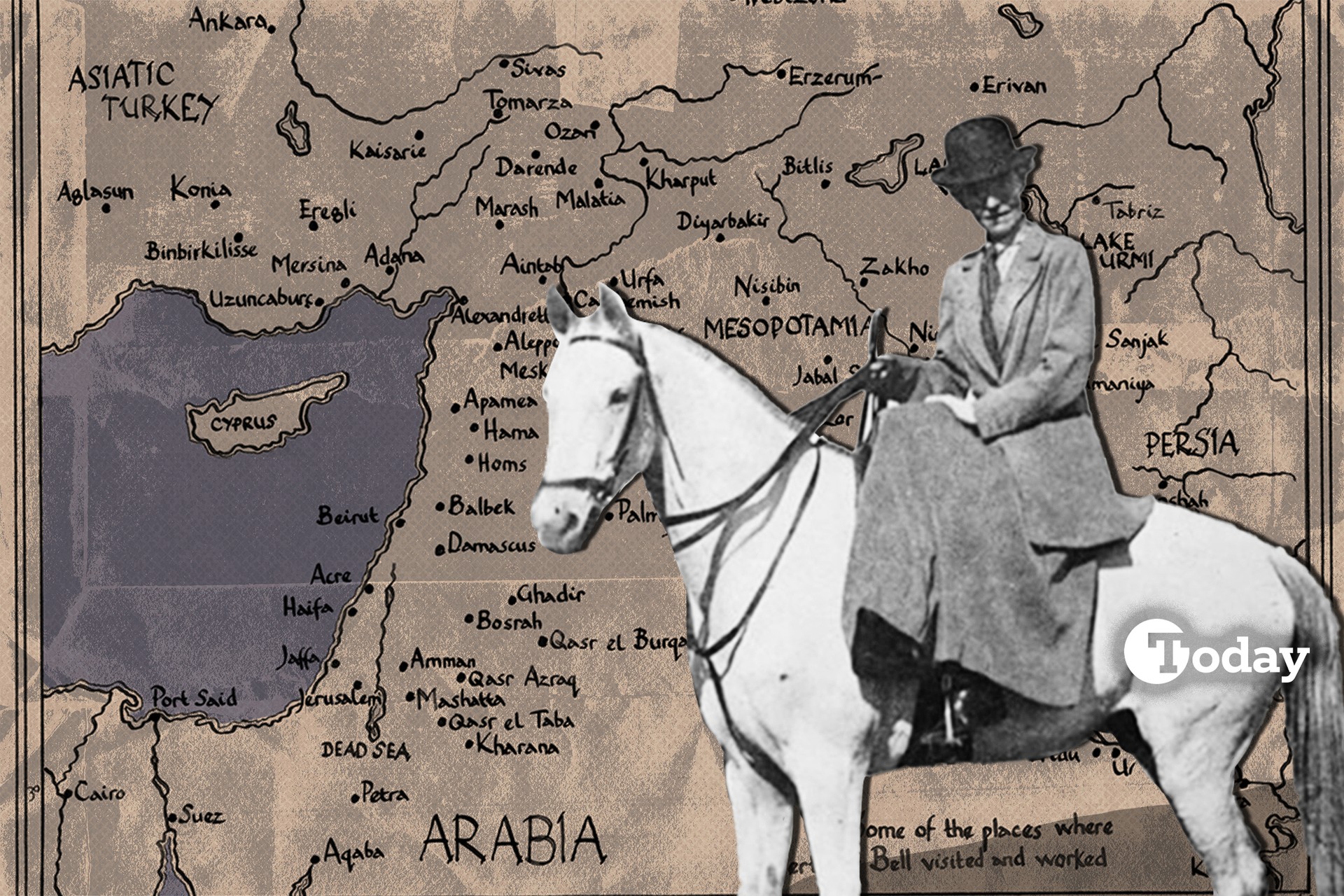
I saw the Dardanelles Strait with Gokceada and beyond it, Samothrace, followed by Ilium and the Troy plain beyond Bozcaada
The writer of these words, describing the view of the Dardanelles and the surrounding islands in the early 20th century, left a significant mark on global political history.
Much like Alexander the Great, who made his first stop in Troy, Bell’s initial encounter with Anatolia was at Canakkale. The date was May 1, 1899. At the time, she was not yet widely known.
By the time of her death in 1926, her fame had spread across the world. Still unsure of her identity? Here’s a hint: she’s considered the "Mother of Modern Iraq" and was once called "The Desert Queen." Yes —it’s Gertrude Bell.
As the Syrian regime collapses and the region reshapes itself, we take a closer look at Gertrude Bell, who mapped the Middle East a century ago and had a significant connection to Canakkale.
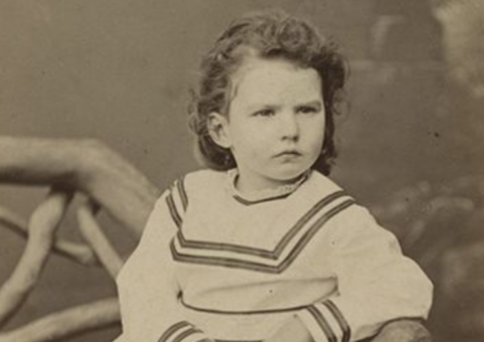
Gertrude Margaret Lowthian Bell was born on June 14, 1868, in County Durham, England, into a wealthy family. Her grandfather, Isaac Lowthian Bell, was a prominent figure in the English iron and steel industry. Her father, Hugh Bell, was an accomplished academic.
After the death of her mother when she was just 3 years old, Gertrude was raised by her father and stepmother. Her education began at home with private tutors and later continued at Queen's College.
Her academic prowess led her to study modern history at Oxford University, where she became the first woman to graduate with honors. This achievement earned her a feature in The Times.
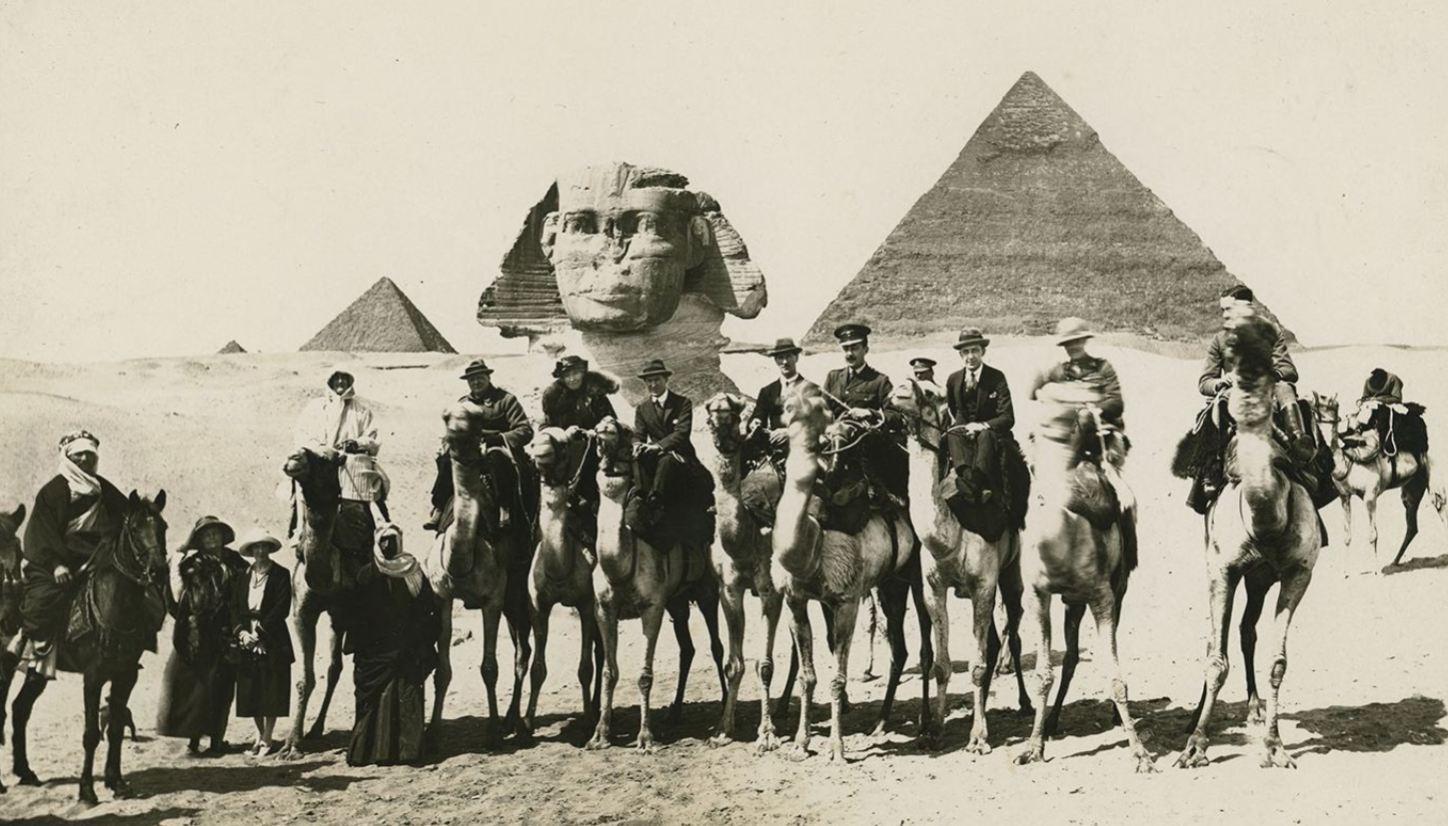
It can be said that Gertrude Bell's life was shaped by the travels she made. Bell made her first foreign trip in 1888-89 while she was still a student at Oxford, visiting Bucharest to stay with her relative Frank Lascelles, who was the ambassador to Bucharest. She stayed there for about four months. She met King Carol and the queen of Romania. After Frank Lascelles was assigned to Tehran, she began preparations for a journey to Iran. She took Persian lessons and arrived in Tehran in 1892.
During this trip, she encountered Hafiz's Divan, which she would later translate, describing it as "the second most common book found in every home after the Quran" in Iran. In a letter to her cousin Horace Marshall, she wrote about Tehran: “It’s as if I was an empty jar, and now I am being filled here. This world, which I was unaware of, is so vast and wonderful.” She fell in love with Henry Cadogan, a member of the Iranian embassy staff. However, due to her father’s disapproval, she was forced to end the relationship and return to London.
In December 1897, she embarked on a world tour with her brother Maurice. She first reached America, then traveled to Japan, China, Singapore, Ceylon, Djibouti, Suez, Egypt, Athens, Istanbul, Sofia, Belgrade, Vienna, Liechtenstein, and completed her first world journey in June 1898.
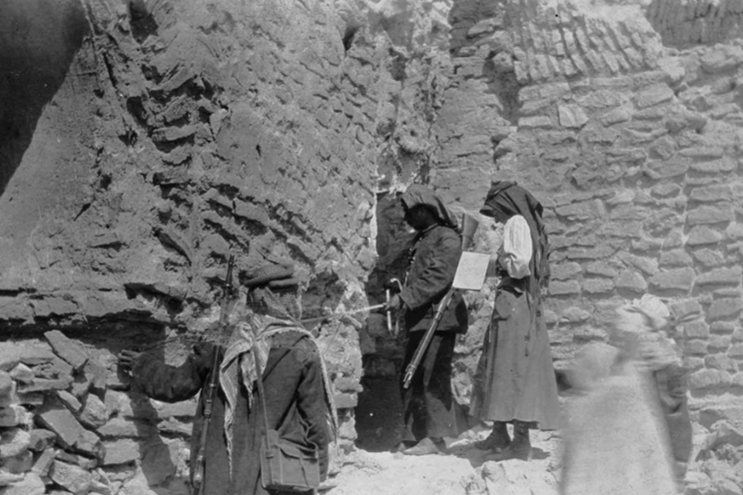
In 1899, Bell's travels took a turn that would shape her future. While traveling in Greece, she became immersed in archaeological sites, particularly in the field of ancient Troy. In late April, she crossed into Türkiye and arrived at Canakkale on May 1, 1899. Bell’s journal entry for the day read: "We decided to go to Troy."
Arriving in Canakkale, Bell was greeted by Jacob, a Jew sent by Frank Calvert, the British-American consul in the area. Bell and her companions made their way to the consul’s residence and met the 71-year-old Calvert, whom Bell described as a charming and hospitable man.
After a brief rest, Bell and her party traveled to the hills above Canakkale, where they were treated to breathtaking views of the Gallipoli Peninsula, Gokceada (Imbros) and Samothraki islands.
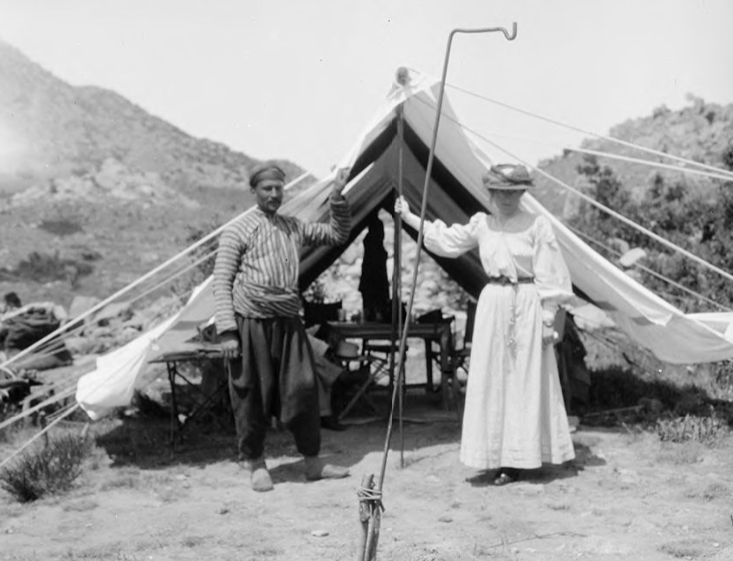
Eventually, they arrived at the ancient site of Troy. Bell’s description of the mound at Hisarlik, the site of the ancient city, was brief but revealing. She noted the "complex mass of ruins" and the "mound covered with excavation debris," signaling her initial struggle to comprehend the full historical significance of the site.
Unlike many others, Bell did not immediately associate it with the Trojan War or the epic tales of Homer’s Iliad. Instead, she was captivated by the natural beauty of the landscape, with the Scamander River (Karamenderes) winding its way through the plain, surrounded by the majestic mountains of Ida and Olympus.
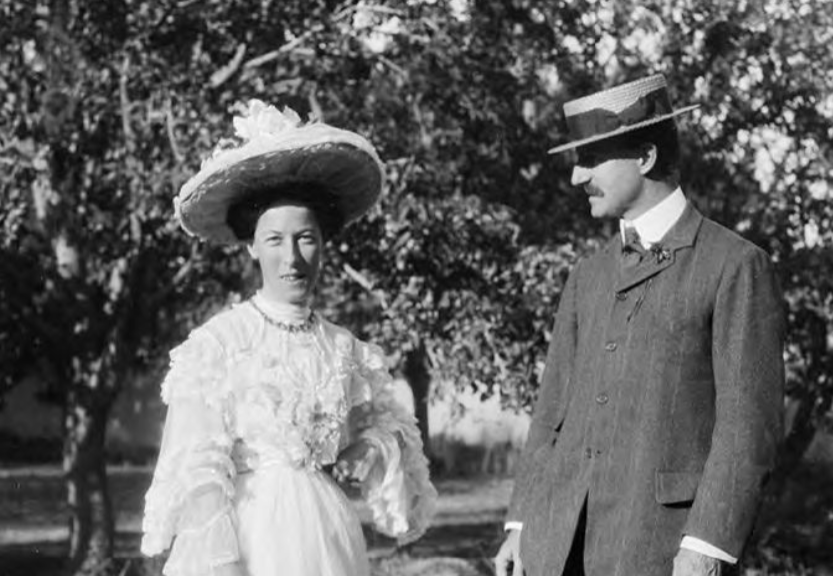
The brief trip mentioned above was Bell’s first and last visit to Gallipoli. However, despite this, Gallipoli would tragically play a significant role in her life. Bell met and fell in love with Major Charles Doughty-Wylie in Konya. He was the British consul in Konya.
Doughty-Wylie, whom Gertrude wanted to marry, was already married. They secretly met several times in London. The two reunited for the last time in February 1915, spending four nights and three days together.
Afterward, Wylie joined Gen. Ian Hamilton's entourage and moved to Gallipoli.
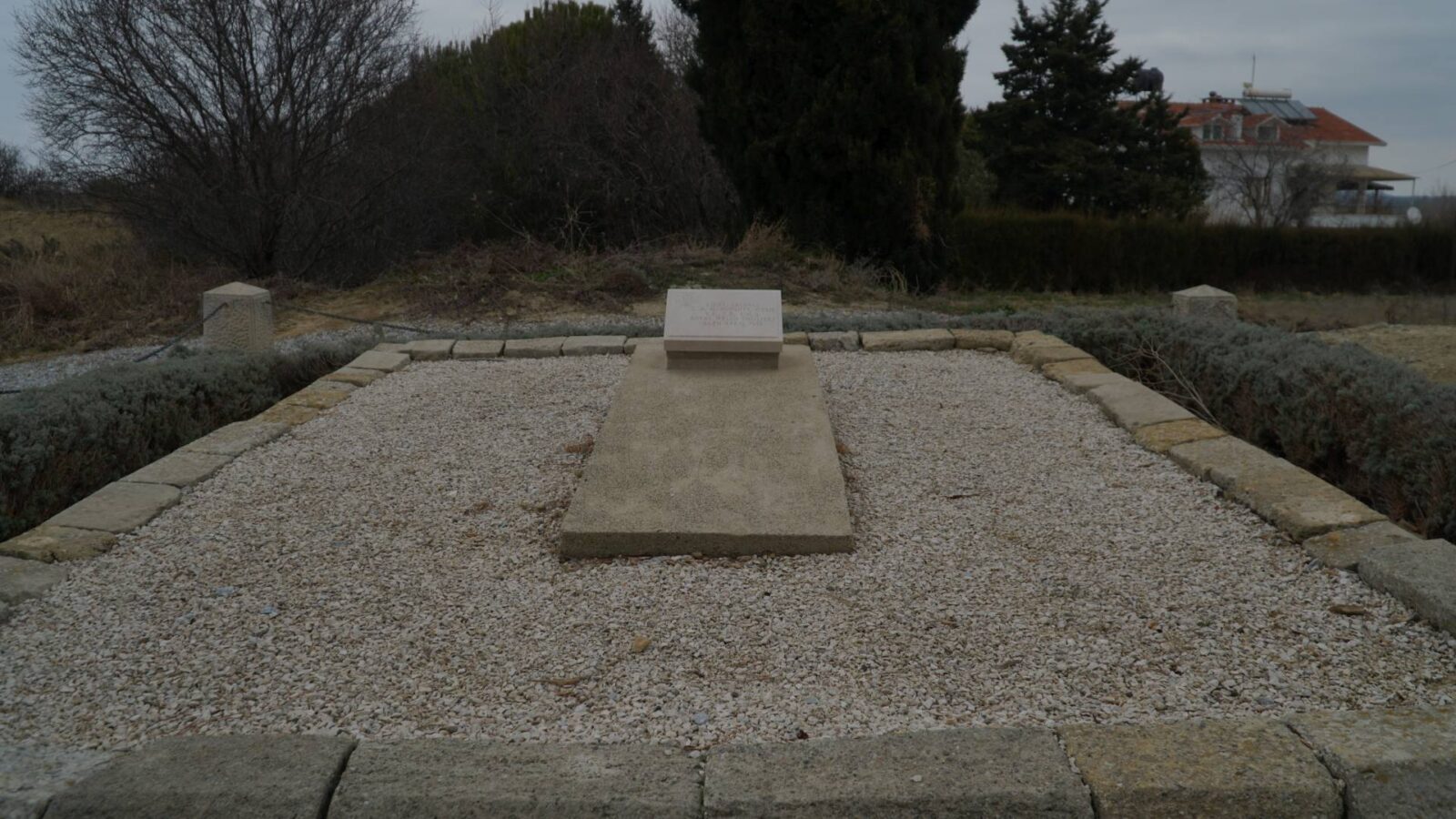
Doughty-Wylie was buried at the spot where he was shot by a sniper on April 26, 1915, at Harapkale Hill, during an assault he initiated to capture Gozcu Baba Hill, defended by Turkish soldier Sergeant Ezineli Yahya.
His grave is the only individual Allied grave in Gallipoli. During his time in Gallipoli, Wylie corresponded with Bell several times. After Doughty-Wylie’s death, it is said that Bell developed a sense of hostility toward the Ottomans and Turks.
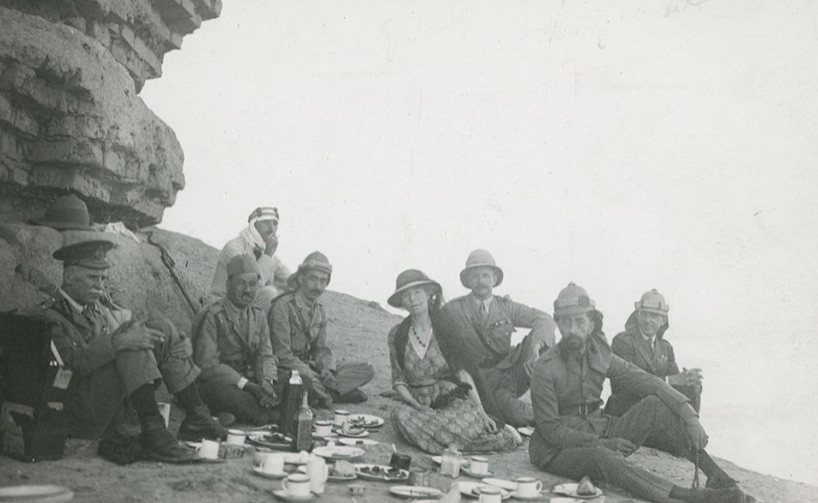
Bell’s contributions extended far beyond her travels. After her lover's death, Bell became involved in intelligence operations during World War I, serving as an agent of the British Empire and at the Arab Bureau in Cairo.
She played a destructive role against the Ottoman Empire, especially in Iraq. Whereby eventually leading to the Sykes-Picot agreement of 1916 which still haunts the Middle East to this day.
As a close advisor to King Faisal I of Iraq. Bell’s expertise in the region made her a pivotal figure in establishing British colonial administration.
Bell recommended that Faisal be made king of the newly established Iraqi state. Later, she served as his advisor. She expressed her dream about this as follows: “Before I die, I will see Faisal rule from the Persian borders to the Mediterranean.” She continued to work toward this dream: “This morning, I spent all my time in my office in Baghdad, determining Iraq’s southern borders. It was a beautiful morning … ” However, this task was not easy: “I will never again get involved in creating a king. It’s an exhausting job!”
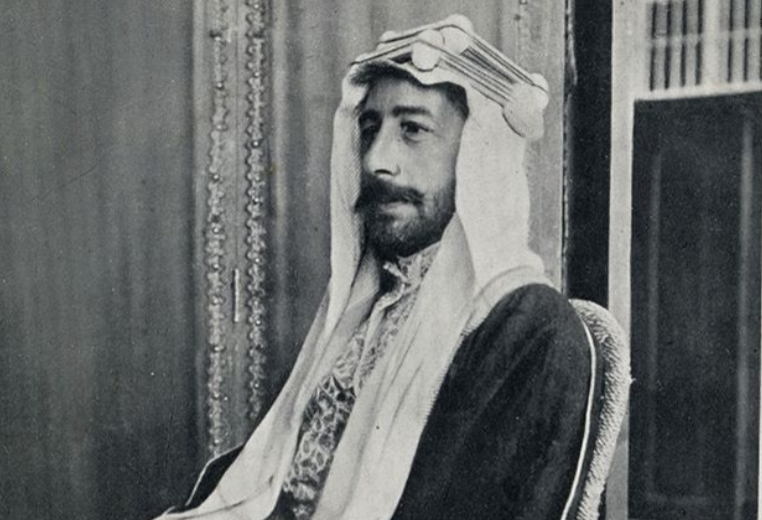
After the "king-making" task, Bell returned to her greatest passion, archaeology, from which she had taken a brief break. She became the honorary director of the Iraq Antiquities Department. She was the founder of the Baghdad Archaeology Museum, which would open in 1926. Her words, “Just as the Creator enjoyed creating the world in six days, I enjoyed founding the museum just as much,” show the pleasure she derived from museology. Throughout this process, she ensured many excavations took place in Iraq. A large portion of the findings was sent to the British Museum.
Gertrude Bell committed suicide on the night of July 12, 1926, two days before her 58th birthday, by taking a medication at her home in Baghdad.
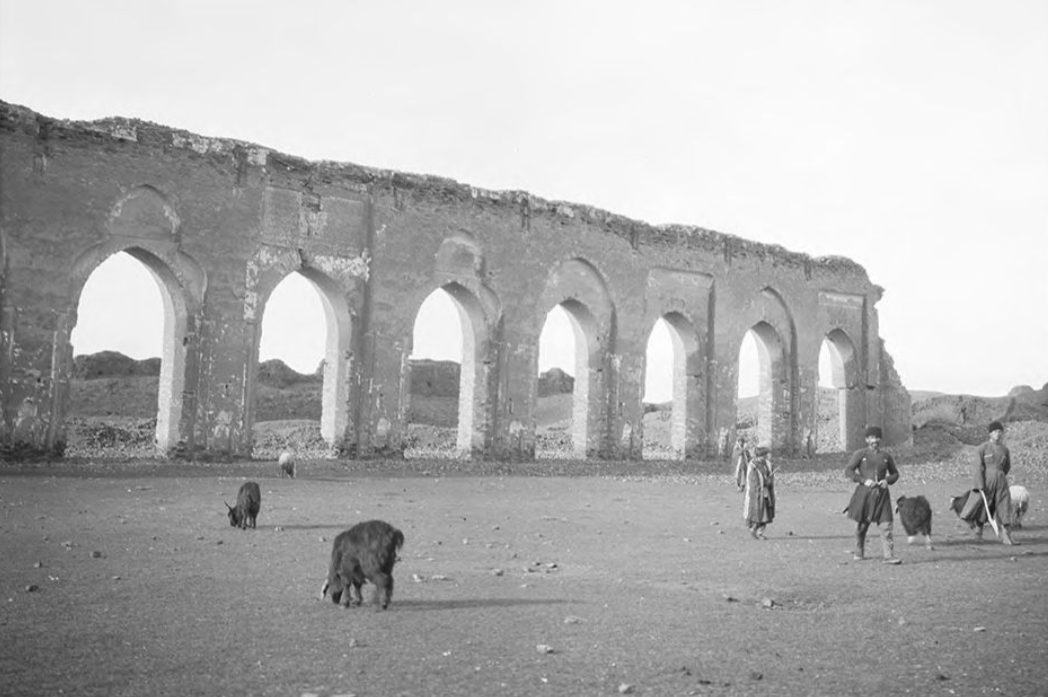
Bell and her colleagues drew the fate of countries like Iraq, Syria, Jordan and Lebanon in the early 20th century. Readers may not know whether they were disciplined with a ruler in school, but for the Middle East, the metaphorical "ruler" evokes painful memories of external control and division. We have felt its sting.
The region understands this pain all too well. But how many times has the "ruler" been wielded, metaphorically breaking over the heads of the people in Syria, Iraq, Lebanon, and Jordan? In the coming months, we will inevitably witness how the "ruler" continues to shape Syria's future.
Without further ado, the word "Tenedos" appears twice in Gertrude Bell's diaries. Bell never visited the island. She merely looked at it from a distance. Her only connection to Gallipoli is the grave of her lover in Seddulbahir. That grave is one of the symbols of how the borders were drawn in Gallipoli.